Shane Blu-ray Movie
HomeShane Blu-ray Movie 
Warner Bros. | 1953 | 118 min | Not rated | Aug 13, 2013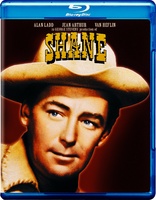
Movie rating
7.9 | / 10 |
Blu-ray rating
| Users | 4.4 | |
| Reviewer | 4.5 | |
| Overall | 4.4 |
Overview
Shane (1953)
A mysterious drifter helps farmers fight off a vicious gunman.
Starring: Alan Ladd, Jean Arthur, Van Heflin, Brandon De Wilde, Jack PalanceDirector: George Stevens (I)
| Western | Uncertain |
| Drama | Uncertain |
Specifications
Video
Video codec: MPEG-4 AVC
Video resolution: 1080p
Aspect ratio: 1.38:1
Original aspect ratio: 1.37:1
Audio
English: DTS-HD Master Audio 2.0 Mono (48kHz, 24-bit)
French: Dolby Digital 2.0 Mono
Spanish: Dolby Digital 2.0 Mono
Subtitles
English SDH, French, Spanish
Discs
50GB Blu-ray Disc
Single disc (1 BD)
Playback
Region free
Review
Rating summary
| Movie | 5.0 | |
| Video | 5.0 | |
| Audio | 4.0 | |
| Extras | 3.0 | |
| Overall | 4.5 |
Shane Blu-ray Movie Review
The Stuff of Legend
Reviewed by Michael Reuben July 30, 2013Shane is more than a Hollywood classic and a great Western. George Stevens' 1953 masterpiece tapped into something primal in the human experience, which is one of many reasons why the film still resonates so strongly with viewers of all ages. Its influence has been incalculable, and not just in a direct reinvention such as Clint Eastwood's Pale Rider. Look at Mad Max's wordless exchanges with the Feral Kid in The Road Warrior, as Max reluctantly comes to the aid of settlers under attack from The Humungus, and you'll see Shane. When Avatar's ex-marine Jake Sully makes common cause with the Na'vi to defend their home world against the superior firepower of a mining operation, he is following in Shane's footsteps. The increasingly desperate struggle of Christopher Nolan's Dark Knight to escape the consequences of his past and start a new life, freed from the burden of defending Gotham, echoes Shane's flight from his life as a gunfighter. Stevens, who both produced and directed, had little inkling of the impact his film would have when he read Jack Schaefer's 1949 novel entitled Shane and thought that it would adapt well to the screen. (A.B. Guthrie Jr. wrote the screenplay, with additional dialogue by Jack Sher.) Stevens knew that he wanted to make a Western that depicted the effects of violence as realistically as the production code of the era would allow. Having fought in World War II, he knew how brutally a single bullet could ravage the human body. He was weary of films that showed cowboys brandishing six-shooters like toys. In Shane, when someone is hit by a bullet from a pistol, the impact knocks him down. Stevens also experimented with sound, so that the gunfire would be loud and shocking to audiences of the era. The shots may be unremarkable by today's digitally pumped-up standards, but at the time the gunfire registered with the impact of Michael Mann's famous L.A. street battle in Heat. Stevens' attention to detail and his insistence on multiple takes caused Shane to go over schedule and over budget, to the point where Paramount tried to sell the film and cut its losses. Several accounts of the story exist, but the prospective buyer was Howard Hughes, who ultimately declined the deal. But Stevens had the last laugh. When the film finally premiered at Radio City Music Hall on April 23, 1953, reviews were rapturous, and the box office exceeded Paramount's expectations. The film has consistently appeared on various "best" lists, but even fans who think they know it well will rediscover it in this new Blu-ray version distributed by Warner Home Video under agreement with Paramount.
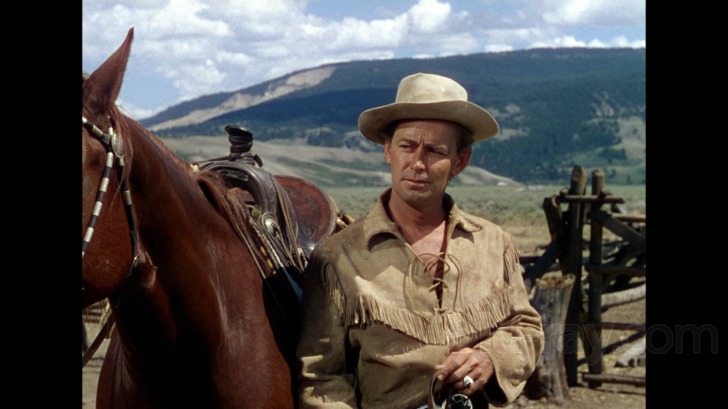
Shane is set in Wyoming during the years after the Civil War. A scattered group of homesteaders have legal claims to small plots of land on which they are trying to support families by farming. Opposing them is Rufus Ryker (Emile Meyer), an earlier settler, who wants the homesteaders removed so that his cattle can graze throughout the valley without fences or other obstructions. Ryker's men have not yet resorted to firearms, but they have tried every other form of intimidation. One of the many notable aspects of Stevens' filmmaking technique (and Guthrie's script) is that none of this background is ever explained by a title card or a character delivering a speech. It seeps through the dialogue and is imparted along the way, usually while other events are occuring in the foreground. The film opens at the farm of Joe Starrett (Van Heflin), with the sound of his unseen wife, Marian (Jean Arthur), singing. Their son, Joey (Brandon De Wilde), who was the narrator of the book and often represents the audience's point of view, is aiming his rifle at a stag when he spots a distant figure riding toward the farm: a man in buckskin with a pistol holstered on a fancy belt. The rider's name is Shane (Alan Ladd), and he never relates his history, but we and the Starretts learn all about him from his reactions to what he sees in the valley. He's obviously a gunfighter who's seen more than his share of violence, and he's just as obviously had enough of that life. (As Shane says at one point, he wants to go somewhere unconnected with his former life—"some place I've never been"—and Ladd's delivery gives the phrase an ache of longing.) Joe Starrett initially mistakes Shane for one of Ryker's men, but he apologizes after Ryker and his hooligans arrive with their usual threats and Shane unexpectedly backs up the Starretts. For reasons that one can debate for a long time—this is clearly not the kind of place Shane had in mind—he takes a job as a farmhand for Joe Starrett. Much of Shane plays as a deliberately paced countdown to the ultimate confrontation that every viewer knows is coming between Shane, the avenging angel with the tarnished wings, and Ryker backed by all his forces, including the black-clad devil Wilson (Jack Palance, billed as "Walter Jack Palance"), a gunfighter from Shane's old world but with none of his regrets or conscience. Yet another of Shane's noteworthy features is how Stevens measures out the moments to the final battle with incidents that deepen our appreciation of the stakes and invest us fully in the fate of the Starretts and their fellow homesteaders, while also being, in and of themselves, entertaining to watch. (Stevens knew what he was doing when he spent all those extra months editing the film.) Take, for example, the elaborately choreographed barroom brawl that begins as a fight between Shane and Ryker's man Calloway (Ben Johnson, a future member of The Wild Bunch). It isn't just an action sequence; it's also a mini-drama in which the resolve of the homesteaders, and especially Joe Starrett, is tested. Will they or won't they come to Shane's aid? Young Joey is among the observers, and his instinctive sense of what's right is a key element in the scene, as it remains throughout the film. Marian Starrett's disapproval in the aftermath of the fight is the ongoing counterpoint to Joey's encouragement. Or consider the subplot involving the former Confederate soldier, Frank "Stonewall" Torrey (Elisha Cook Jr.), who's too hot-tempered and too much of a braggart for his own good. From the moment Stonewall appears, it's apparent that this brash homesteader is spoiling for a fight with Ryker and his men, but Stevens bides his time, letting Stonewall talk, giving us a chance to get to know him, so that when he's finally standing in a muddy street opposite the cold-eyed Wilson, we can actually feel the instant when it dawns on the loudmouth farmer that he's been baited into a fight he can't win. (It helps to have a character actor as skilled as Elisha Cook Jr. playing the part.) Shane has so many memorable scenes that it would consume too many pages to discuss them all. One element of its unique visual design is worth noting, however, which is the decision by Stevens and cinematographer Loyal Griggs (who won an Oscar for the film) to use long lenses and include the Grand Teton mountains in the background of outdoor shots wherever possible. Anyone who doubts that the Academy ratio of 1.37:1 can't be used for an "epic" feel should study Shane's framing. When Joe Starrett and the homesteaders complain that there's no law in this remote valley, you believe them, because Stevens continually shows you their isolation in this beautiful but desolate landscape far from civilization, where their only hope arrives in the unexpected shape of a soft-spoken man in a buckskin jacket.
Shane Blu-ray Movie, Video Quality 
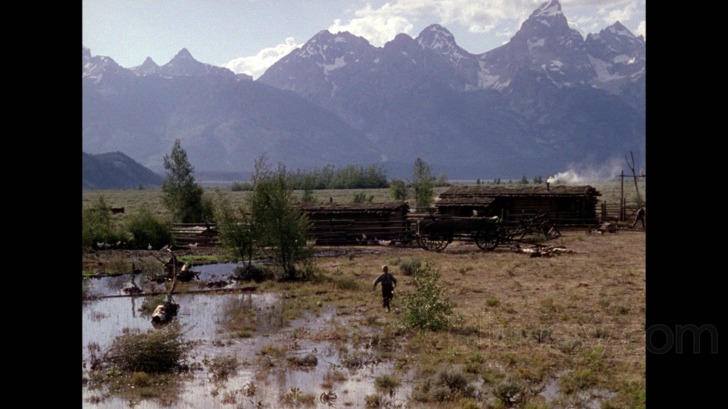
Stevens and cinematographer Griggs shot Shane in three-strip Technicolor. Principal photography was completed in 1951, at a time when films were still being photographed in the Academy ratio of 1.37:1. By the time Shane was released, however, Paramount had decided to convert to their version of widescreen, which was initially 1.66:1 and eventually settled at today's standard 1.85:1. Shane's initial showing at Radio City Music Hall was at the former aspect ratio, but it was almost certainly projected at varying aspect ratios during its theatrical run, which fell during the period when American cinemas were converting to widescreen. In any case, there is no dispute that the film was composed for the Academy ratio, which is how it has been presented on this Blu-ray. According to the commentary, Shane's negative underwent extensive restoration in the Nineties. It is unknown whether additional restoration was performed for this Blu-ray, but the results on Paramount/Warner's 1080p, AVC-encoded Blu-ray are simply astonishing. Details, densities, black levels, textures and colors are all revelatory. I literally felt that I was seeing a film I had never seen before. It's not just in the obvious scenes, such as the mountain vistas around the Starrett farm, that this Blu-ray's image reveals its treasures. It's also in the subtler shadows of the day-for-night sequences (what Stevens called the "Rembrandt lighting"), such as the encounter between Ryker and Joe Starrett after the Fourth of July celebration, where the shadow detail is just sufficient and the shades of black and blue layer over each other in just the right proportions to create the sense of depth and danger that Stevens and Griggs intended. The film's grain pattern is natural, fine and undisturbed by digital manipulation. The impressive bitrate of 29.69 Mbps helps explain the lack of any compression issues.
Shane Blu-ray Movie, Audio Quality 
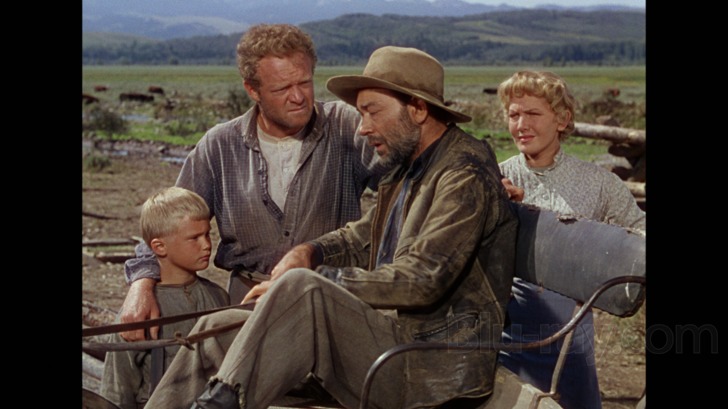
Although Shane received a stereo remix after it was released, its original soundtrack was mono, and that appears to be the track presented here in lossless DTS-HD MA 2.0. The track has very good fidelity for a film of this vintage, with clear and natural-sounding dialogue, forceful sound effects (especially the gunshots), wide dynamic range and as encompassing a presence for Victor Young's memorable score as one can possibly imagine without stereo surround.
Shane Blu-ray Movie, Special Features and Extras 
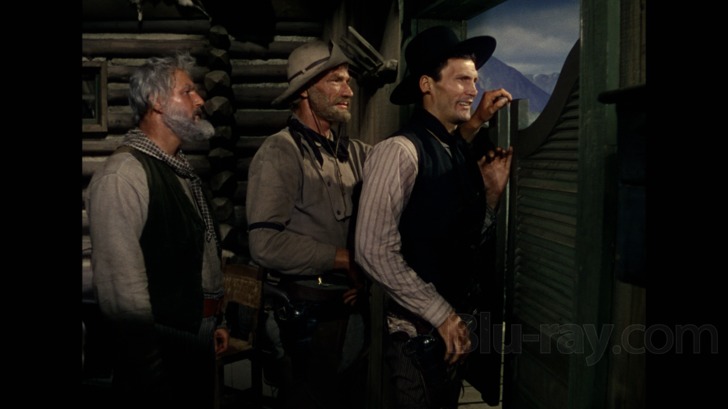
The extras have been ported over from Paramount's 2000 DVD of Shane.
- Commentary with George Stevens, Jr. and Associate Producer Ivan Moffat: Stevens served as an uncredited production assistant to his father on Shane, and Moffat worked closely with Stevens, Sr. on the film and later wrote the screenplay for Giant. Their memories almost fifty years after the experience are remarkably detailed, and Stevens has the benefit of his father's notes and correspondence, from which he reads at appropriate moments. Whether you're new to Shane or a long-time fan, the commentary is essential listening.
- Theatrical Trailer (480i; 1.78:1, enhanced; 1:59): And you thought today's trailers give away too much!
Shane Blu-ray Movie, Overall Score and Recommendation 
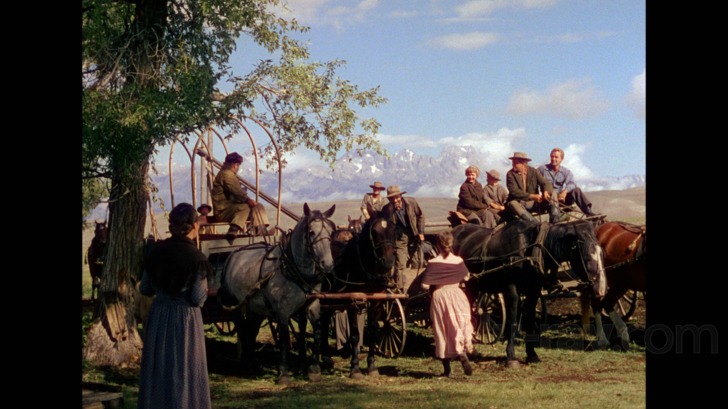
The ending of Shane has long been debated, including by characters in other movies. The debate even becomes a kind of plot point in The Negotiator, as the characters played by Kevin Spacey and Samuel L. Jackson acquaint each other with their strategic outlooks by arguing over the significance of Shane's final shots. Now, given the sensitivity to so-called "spoilers" by some members of the Blu-ray.com community, even in a film that is now sixty years old—when, I wonder, does the statute of limitations expire?—I will say nothing more except that, in my view, the essential quality of Shane is that he is a breed apart from everyone else. It's the quality that makes young Joey Starrett constantly pester him with questions, that both repels and secretly attracts Joey's mother (the attraction subplot was abandoned), that makes men like Joe Starrett respect him and that so intimidates a bully like Ryker. It also the quality that prevents Shane from finding peace. "There's no living with a killing", Shane tells Joey near the film's end. "There's no going back from one. Right or wrong, it's a brand. A brand sticks." Shane's fate was decided long before those final frames. Highest recommendation.
Similar titles
Similar titles you might also like

Ride the High Country
Warner Archive Collection
1962

Broken Trail
2006

The Man Who Shot Liberty Valance 4K
1962

My Darling Clementine
Theatrical and Prerelease Versions
1946

Jeremiah Johnson
Warner Archive Collection
1972

The Shootist
1976

Last Train from Gun Hill
Paramount Presents #18
1959

The Gunfighter
1950

Jubal
1956

Jane Got a Gun
2015

The Sisters Brothers
2018

Gunfight at the O.K. Corral 4K
1957

Angel and the Badman
1947

Warlock
Limited Edition to 3000
1959

High Noon
4K Restoration
1952

Will Penny
1968

The Frisco Kid
Warner Archive Collection
1979

Pale Rider 4K
1985

The Cowboys
1972

The Big Country
1958


